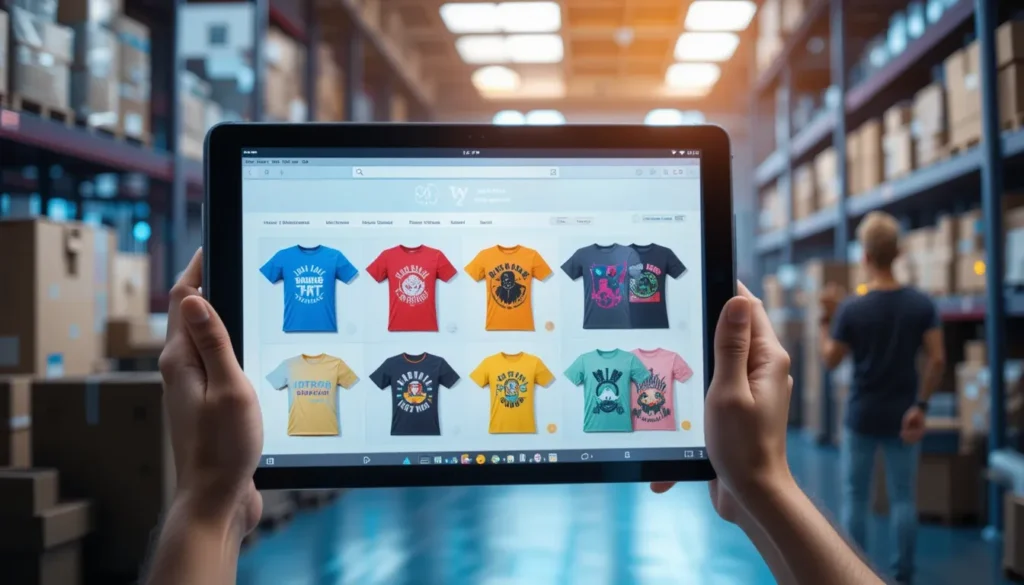Ever wonder how some people seem to effortlessly make money online while juggling a day job, studies, or even a busy family life? In today’s digital age, creating multiple income streams isn’t just a lofty goal—it’s a practical necessity. With rising living costs and an increasingly competitive job market, having a reliable side hustle can provide financial security and peace of mind.
Whether you’re looking to fund your next vacation, pay off debt, or save for an early retirement, online side hustles offer a flexible way to earn extra income without a huge upfront investment. In this article, we’ll explore the best side hustles you can start today. Along the way, you’ll find real-world examples, practical tips, and expert-backed advice to help you kickstart your journey toward financial freedom. Let’s dive right in!
Why Pursue Online Side Hustles?

Flexibility and Convenience

One of the greatest perks of an online side hustle is the flexibility it offers. You’re no longer confined to the 9-to-5 grind or a specific location. Got a smartphone or laptop? You can work from anywhere—your living room, a cozy café, or even a beachside resort. This setup is ideal for parents, students, or full-time workers who need to squeeze in extra hours around a busy schedule.
Low Start-Up Costs

Traditional businesses often require hefty capital, rental space, and complicated permits. Online ventures, on the other hand, generally involve minimal upfront expenses. For example, you could launch a freelance writing gig or start an e-commerce store with just a laptop and an internet connection. Many platforms—like Upwork, Fiverr, or Etsy—have free or low-cost registration, making it easy for anyone to get started.
Diversified Income

Relying on a single source of income can be risky. If you lose your job or face a pay cut, it directly impacts your financial well-being. Having multiple income streams from various online hustles provides a safety net. It may also pave the way for you to turn one of these side gigs into a full-time venture if it grows beyond your expectations.
Quick Tip: Don’t try to launch multiple side hustles at once. Start with one you can handle comfortably, build momentum, and then explore new opportunities as you gain confidence.
7 Best Side Hustles to Start Making Money Online
In this section, we’ll dive deeper into specific side hustles. We’ll look at how they work, potential earnings, and essential steps to get started. Whether you’re drawn to creative work, service-based opportunities, or e-commerce, there’s something here for everyone.
1. Freelance Writing and Content Creation

What Is It?
Freelance writing involves crafting blog posts, articles, social media content, or copy for businesses and individuals. If you’ve got a knack for words, this could be your golden ticket.
Why It Works:
- High Demand: Businesses need constant content to rank on search engines, build brand awareness, and engage customers.
- Scalable: You can write for small blogs initially, then move up to higher-paying corporate clients.
- Flexible Niche Selection: Love fashion, tech, or travel? You can specialize in almost any niche.
Getting Started:
- Build a Portfolio: Even if you don’t have professional experience, create sample articles or start your own blog to showcase your writing style.
- Choose a Platform: Sign up on freelance marketplaces like Upwork or Fiverr.
- Set Competitive Rates: Research what other writers charge. Begin modestly and increase your rates as you accumulate positive reviews.
Personal Anecdote:
I started my writing career by blogging about my weekend hiking adventures. Before I knew it, outdoor gear companies reached out, offering payment for promotional articles. That side gig quickly turned into a significant income stream.
2. Virtual Assistance and Online Administrative Services

What Is It?
A Virtual Assistant (VA) provides administrative, technical, or creative assistance to clients remotely. Tasks may include managing emails, scheduling appointments, handling social media, or data entry.
Why It Works:
- Growing Market: Small businesses and busy entrepreneurs often seek virtual assistants to save time and resources.
- Variety of Services: You can specialize in social media management, customer service, bookkeeping, or email marketing, based on your skill set.
- Set Your Own Hours: You can work part-time or full-time, depending on your availability.
Getting Started:
- Identify Your Skills: Are you good at organizing calendars, editing videos, or sending newsletters? Niche down to stand out.
- Create a Profile: Platforms like Remote.co or Fancy Hands connect VAs with potential clients.
- Offer Package Deals: Instead of hourly rates, consider selling retainer packages (e.g., 10 hours of VA tasks per week) for consistent income.
Quick Tip:
Communication is everything in virtual assistance. Clarify tasks and deadlines upfront, and maintain consistent contact with your clients to ensure long-term relationships.
3. Online Tutoring and Coaching

What Is It?
Online tutoring involves teaching academic subjects, languages, or specialized skills (like coding or graphic design) over video calls. Coaching could focus on personal development, fitness, career guidance, or mental wellness.
Why It Works:
- Global Reach: You can teach students from all over the world, regardless of time zone differences.
- High Earning Potential: Skilled tutors can charge premium rates, especially for specialized subjects like advanced mathematics, test prep (SAT, GRE), or niche business strategies.
- Flexible Schedule: Set your own hours and only accept as many students as you can handle.
Getting Started:
- Define Your Expertise: Are you fluent in a second language or an expert in a particular field? This sets you apart in a crowded market.
- Choose a Platform: Websites like Tutor.com or Wyzant offer easy onboarding for tutors.
- Set Clear Pricing: Determine if you’ll charge per hour, per lesson, or offer bundled sessions. Research competitor rates to stay competitive.
Real-World Example:
Karen, a full-time accountant, started tutoring college students in basic accounting principles via Zoom. Within a year, she had enough demand to double her rates and cut back her day job hours.
4. Affiliate Marketing

What Is It?
Affiliate marketing involves promoting other companies’ products or services using custom tracking links. When someone clicks on your link and makes a purchase, you earn a commission.
Why It Works:
- Passive Income Potential: Once your links are embedded in evergreen content (like blog posts or YouTube videos), you can earn commissions long after the initial effort.
- No Inventory Needed: You don’t have to create or store products. Your role is primarily marketing and driving sales.
- Scalable: Expand by building email lists, utilizing multiple social platforms, or venturing into different niches.
Getting Started:
- Pick a Niche You Love: If you’re passionate about fitness, you’ll find it easier to create authentic content about workout gear or nutrition supplements.
- Join Affiliate Networks: Platforms like Amazon Associates or ShareASale offer thousands of affiliate programs.
- Create Valuable Content: Blog posts, social media updates, and videos that provide genuine value are more likely to attract clicks and conversions.
Key Takeaway:
Authenticity is crucial in affiliate marketing. Promote products you truly believe in to foster trust with your audience.
5. Print-on-Demand and Dropshipping

What Is It?
Print-on-demand allows you to sell custom designs on merchandise like T-shirts, mugs, or phone cases without holding inventory. Dropshipping involves selling products via an e-commerce store where a third-party supplier manages shipping.
Why It Works:
- Minimal Risk: You pay for products only after a customer orders.
- Wide Product Range: You can explore multiple niches—fitness, pets, pop culture, etc.—through your designs or curated product selections.
- No Shipping Headaches: Manufacturers handle shipping directly to your customers, saving you time and reducing overhead.
Getting Started:
- Choose a Platform: Websites like Printful or Redbubble are popular for print-on-demand, while Shopify is a go-to for dropshipping.
- Research Trending Niches: Use tools like Google Trends or social media hashtags to see what’s popular.
- Optimize Product Listings: High-quality photos, detailed descriptions, and SEO-friendly titles improve visibility and sales.
Read This As well:
If you’re curious about setting up a successful online store, check out our comprehensive guide on E-Commerce Basics for Beginners.
6. Stock Photography and Videography

What Is It?
If you love taking photos or recording videos, stock platforms allow you to sell your work to marketers, web designers, or publishers. Each download or purchase earns you royalties.
Why It Works:
- Creative Outlet: Turn a hobby into a side hustle, capturing landscapes, portraits, or lifestyle images.
- Multiple Income Streams: One photo can be sold numerous times across different platforms like Shutterstock or Adobe Stock.
- Passive Earnings: Once uploaded, your photos can generate income for years.
Getting Started:
- Curate a Collection: Gather high-quality images or footage. Pay attention to composition, lighting, and uniqueness.
- Upload Consistently: Algorithms often favor active contributors who regularly add fresh content.
- Use Descriptive Keywords: Tagging your photos with relevant keywords (e.g., “happy family,” “remote work,” “modern office”) helps them show up in search results.
Pro Tip:
Focus on trending topics—remote work, diversity, sustainability—to increase your photos’ odds of being discovered and purchased.
7. YouTube Channel or Podcasting

What Is It?
Content creation on YouTube or podcast platforms can generate revenue through ads, sponsorships, and affiliate links. This route demands consistent, quality content that resonates with a specific audience.
Why It Works:
- Massive Audience Reach: Platforms like YouTube have billions of users, and podcasts continue to rise in popularity.
- Potential for Viral Growth: A single viral video or episode can skyrocket your exposure, leading to sponsorship deals and merchandise sales.
- Long-Term Impact: Once your content is uploaded, it can continue to attract views and ad revenue over time.
Getting Started:
- Choose Your Topic: It could be tech reviews, cooking tutorials, motivational speeches, or comedic sketches.
- Invest in Basic Gear: Clear audio and decent video quality are crucial. A good microphone and a simple lighting setup can make a big difference.
- Engage Your Audience: Ask viewers to like, comment, share, and subscribe. Respond to comments and incorporate viewer feedback to foster a loyal community.
Fun Fact:
Many successful creators started with basic equipment—like a smartphone camera—and slowly upgraded as their channels grew.
Actionable Steps to Kickstart Your Online Side Hustle

Step 1 – Assess Your Skills and Interests

Before diving into any side hustle, take a moment to reflect on what you excel at and what you actually enjoy. Are you a creative soul who loves writing? Or perhaps a numbers whiz who can help small businesses with bookkeeping? Identifying your strengths and passions ensures your hustle won’t feel like yet another chore.
Step 2 – Set Clear Goals and Timelines

- Define Your Income Targets: Determine how much you want to earn per month from your side hustle. Is it $200 for extra groceries, or $2,000 to replace a part-time job?
- Establish Milestones: Break down your goals into mini-steps. For instance, “Acquire my first client by next month” or “Upload 10 product designs this week.”
- Plan Your Schedule: Allocate specific hours each day or week to work on your side hustle. Treat it like an appointment you can’t miss.
Step 3 – Create an Online Presence

In an increasingly digital world, having a professional online presence can make or break your success.
- Social Media Profiles: Use LinkedIn, Instagram, or Facebook to network and showcase your skills.
- Personal Website or Portfolio: A simple WordPress site or an online portfolio on Behance can set you apart from competitors.
- Consistency in Branding: Whether it’s your website’s color scheme or your logo, maintain a cohesive look across platforms.
Internal Link:
Check out our Personal Branding Essentials guide to learn how to stand out in a crowded online market.
Step 4 – Learn the Basics of Digital Marketing

Keywords, SEO, and analytics might sound intimidating, but basic knowledge can help potential clients or customers find you.
- Keyword Research: Tools like Google Keyword Planner or Ubersuggest can help you figure out popular terms to include in your content.
- SEO Optimization: Use relevant keywords in your titles, meta descriptions, and body text to increase your chances of ranking higher on Google.
- Track Your Performance: Monitor website traffic or social media engagement to see what’s working and where to improve.
Step 5 – Build Trust and Credibility

Whether you’re a freelance writer or an affiliate marketer, trust is crucial. People want to feel confident that you know your stuff.
- Testimonials and Reviews: Encourage satisfied clients to leave feedback on your website or social profiles.
- Offer Free Samples or Trials: Let potential customers experience the quality of your work without upfront commitment.
- Transparent Communication: Be honest about pricing, deadlines, and the scope of work. Clear, professional communication fosters long-term relationships.
Step 6 – Continuously Refine and Scale

As you become more comfortable and start seeing results, think about scaling your operations.
- Automate Tasks: Tools like Zapier or Trello can streamline administrative tasks, freeing you to focus on higher-level strategies.
- Consider Outsourcing: If you’re swamped with orders or client requests, hiring a virtual assistant or partnering with other freelancers can help you grow faster.
- Expand Your Offerings: For instance, if you’re a writer, you might add proofreading or coaching services to diversify income streams.
High-Authority External Link:
For more strategies on scaling a small business, check out the U.S. Small Business Administration (SBA).
Overcoming Common Challenges in Online Side Hustles

Time Management

Balancing a full-time job, family obligations, and a side hustle can be tough. Use productivity techniques like the Pomodoro Technique or time-blocking. Focus on high-priority tasks first and avoid multitasking whenever possible to maintain quality.
Dealing with Competition

The online marketplace can feel saturated. Differentiate yourself by niching down—target a specific audience and solve their problems better than anyone else. Alternatively, offer a unique selling proposition (USP), like ultra-fast delivery or in-depth personalized consulting.
Staying Motivated

Burnout is real. Set realistic milestones and celebrate small wins along the way. Surround yourself with supportive peers, whether that’s in a local meetup group or an online forum. Occasional breaks or mini-vacations can also help you recharge and come back stronger.
Rhetorical Question:
Ever wonder why so many people give up within the first few months? Often, it’s because they expect overnight success. Remember: building a sustainable side hustle takes time, patience, and consistent effort.
Handling Legal and Financial Aspects

- Separate Your Finances: Maintain a dedicated bank account for your side hustle to track income and expenses.
- Register Your Business (If Needed): Depending on your country, you may need to register as a sole proprietor, LLC, or other entity type.
- Tax Considerations: Keep receipts and consult a tax professional or refer to official websites like IRS.gov for accurate guidelines.
Conclusion
Learning how to make money online isn’t just a trend—it’s a transformative opportunity that can bring financial stability and professional growth. From freelance writing to affiliate marketing, there’s an online side hustle out there that aligns with your interests and skills. The beauty lies in its flexibility: you can start small, invest minimal capital, and scale up as you gain experience.
At this point, you might be asking: Which side hustle resonates with me the most? The best way to find out is to take a leap. Start a blog, sign up on a freelance platform, or list your very first product. Test the waters, learn from any mistakes, and refine your approach along the way.
Call-to-Action:
Ready to launch your online side hustle? Share your biggest takeaway or any questions in the comments below. If you found this article helpful, spread the word by sharing it with a friend or colleague who could use extra income!
FAQs
Q1. How much money can I realistically make from an online side hustle?
Your earnings vary depending on the type of hustle, the time you invest, and your skill level. Some people make just a few hundred dollars a month, while others scale up to full-time incomes exceeding $5,000 or more monthly.
Q2. Do I need a separate business license or registration?
This depends on your country and local regulations. Many side hustles can operate as sole proprietorships, but if you’re earning significant revenue, consider registering as an LLC or equivalent for liability protection. Always consult a local authority or legal expert for precise requirements.
Q3. Can I start a side hustle without any specific skills?
Absolutely. Many online hustles, like data entry or print-on-demand, require minimal prior knowledge. For more specialized fields (e.g., web design, copywriting), you can begin with free tutorials or inexpensive courses to build foundational skills.
Q4. How do I balance a side hustle with a full-time job?
Effective time management is key. Use a calendar to schedule side hustle hours, and set boundaries to avoid burnout. If possible, pick a hustle that aligns with your interests so it feels less like extra work and more like a rewarding project.
Q5. What’s the quickest way to make money online?
Services like freelancing or virtual assistance can bring faster cash flow because you’re trading your time and expertise for money. However, remember that “quick” money may require long hours or immediate availability, so plan accordingly.
Q6. Are there any risks to making money online?
Yes. Common pitfalls include scams, unreliable clients, and burnout. Stick to reputable platforms, keep contracts or agreements in writing, and maintain a healthy work-life balance.
Q7. Is it possible to turn my side hustle into a full-time business?
Definitely. Many people have transitioned from part-time side hustle to thriving full-time entrepreneur. Once you see consistent income and build a steady client base, you can expand your team, outsource tasks, or invest more resources to grow your business.
Disclaimer: The information in this article is for educational purposes only and does not replace professional financial or legal advice. Always consult qualified experts for your specific situation.
